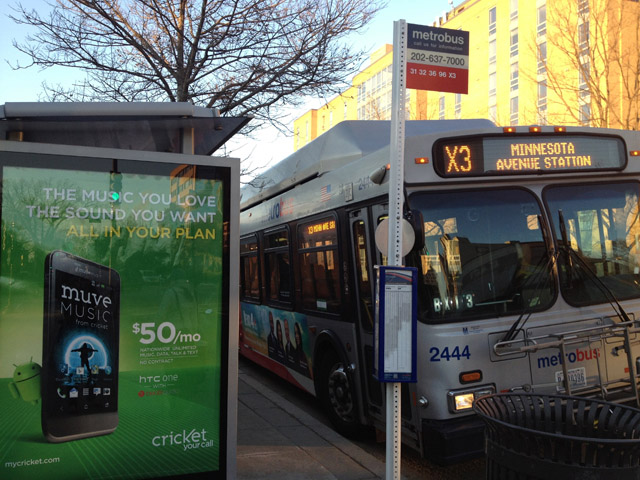WASHINGTON — Crime on Metro has seen a slight increase this spring compared to last, but remained near Metro’s target level. Their full “Vital Signs Report” also found rider and employee injuries across the system were above targets.
The transit system’s quarterly report covering April, May and June finds five crimes per million rides on the rail and bus system, up from 4.7 over the same months in 2015.
“While some crime categories saw decreases compared to Q2/2015 (e.g. snatches down 54 percent), others were up, including parking lot crime (primarily due to more thefts from automobiles in parking garages) and aggravated assaults (arguments between juveniles being the primary cause),” said briefing documents prepared for the Metro board.
Metro Transit Police hope a few additional officers at key locations can “deter aggravated assaults and other crimes in rail stations.” Overall, crime per million passengers in the first six months of the year has been higher each month than the same month the year before. But declining ridership also increases the rate.
Overall, Metro reports three homicides on Metro property between January and June this year; four rapes; 666 larcenies, burglaries or robberies; 73 aggravated assaults; 27 motor vehicle thefts; one attempted motor vehicle theft and one arson. (In addition, a Metro police officer shot and killed a man in July.)
The crime statistics include some incidents at bus stops as well as any incidents at Metro facilities, including on trains, buses, in stations or parking garages.
In terms of rider and employee injuries, the report said, “Customer injuries saw a marked decline in onboard train injuries, but continued to be most frequently affected by slips, trips and falls for rail and bus collision-related injuries. There were nearly 40 percent fewer slips, trips and falls to impact the employee injury rate. However, collisions, struck by/against injuries, assaults and stress from witnessing crime contributed to more lost employee time than Q2/2015.”
The report also added, “Compared to Q2/2015, over twice as many employees received medical treatment and/or had time away from work due to physical assaults and stress from witnessing crime. Most injuries occurred among bus operators, followed by station managers.”
Assaults on bus operators fell 17 percent from the same period a year earlier, and Metro police plan to put more officers on routes where there is high fare evasion to reduce the number of disputes that drivers have to get involved in.
About 20 percent of bus rider injuries were tied to collisions where the driver was at fault or should have been able to prevent the collision.
For customers in the rail system, the most frequent type of injuries were “slips, trips and falls on escalators,” following previous quarters. These injuries accounted for over 75 percent of the total amount There was an 80 percent decrease in customer injuries aboard trains, which include getting caught in closing train doors, but there was an increase of customers caught in elevator doors and hit by fare gates, according to the report.
MetroAccess injuries rose sharply, by 77 percent; the transit system attributes the increase to an uptick in injuries as drivers assisted riders between the paratransit vehicles and the doors of their homes. Metro plans to increase training of the drivers, who work for a contractor.
While the combined customer injury rate for bus, rail and MetroAccess riders was higher in April, May and June than last year, the overall number for the first six months of the year is lower, in large part because January 2015 included the smoke incident near L’Enfant Plaza that killed Carol Glover.
Metro continues to aim to improve train operators’ responses to calls for help over emergency intercoms, and also plans another round of defensive driving training for bus operators.







